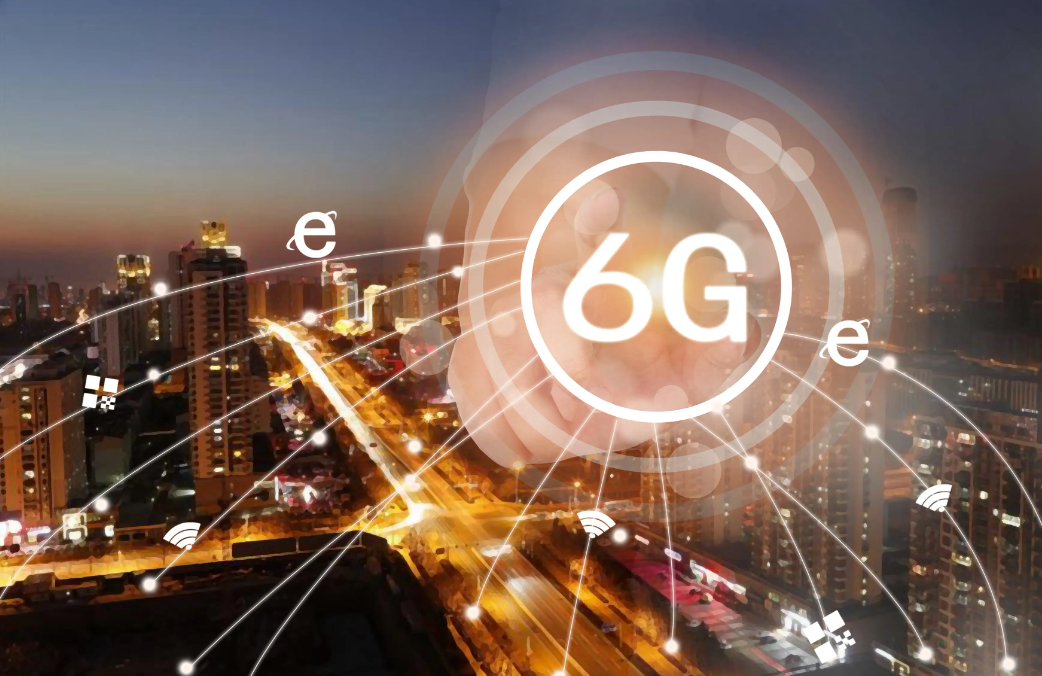
Time:2022-10-29 Views:
If you're wondering what the future of wireless communications looks like, you're not alone. The world is moving towards a 6G-based society. ITU-T recently established a focus group to define future network service requirements. In addition, Google has launched Project Loon to provide Internet access to 5 billion unconnected people by 2030. Meanwhile, research groups based on the Terranova project are developing reliable 6G communication links in the terahertz band at 400 G bits/s. In addition, several companies such as Samsung, Nokia, Ericsson and LG Electronics have already started collaborating on 6G research.

Edge computing
Edge computing is a key component of 6G wireless networks. It will allow the establishment of a highly distributed computing environment at the network edge, which is critical for IoT applications and low-latency services. The technology is also designed to help reduce the energy consumption of mobile devices.
Edge computing will help the network determine the best place to do the computation. It will also improve efficiency and performance. 5G networks already use artificial intelligence to optimize network resources and process data. Artificial intelligence will also play an important role in building 6G systems. It will be more challenging, but the benefits will be huge.
Battery Life
As the use of 6G wireless communication technology increases, battery life needs to improve. 6G devices must have long battery life to provide seamless and instant access to high-end services. It should also have a powerful battery to run at peak efficiency. By improving the energy efficiency of telecom networks, 6G aims to triple the battery life of wireless devices.
6G researchers are building components that will enable future wireless devices to achieve higher speeds and battery life. To do this, new low-energy RF switches are being developed. The new switch is made of a two-dimensional material, which reduces the energy required to operate.
networked sensing
Network sensing is an important part of 6G wireless communication systems and supports various applications. For example, sensor networks can detect intersections in cities or track the movement of pedestrians. Depending on the frequency and reflection characteristics of the object, the quality of the sensed image will vary. In both cases, the resolution is lower than the visual image produced by the camera. However, it offers several attractive properties.
In addition to determining the location and velocity of targets, networked sensing solutions will be able to selectively use different frequencies for different applications. Molecular-level physics shows that different substances emit and absorb electromagnetic radiation at similar frequencies. 6G wireless sensing solutions will take advantage of these differences. As these solutions continue to evolve, they will benefit a range of emerging technologies.
Networked sensing will go beyond wireless communication to enable new applications such as simulating the physical world. Networked sensor data will also provide an entry point for AI learning. This technology is expected to lead to new use cases beyond communications. It has been proposed for use in many fields, including healthcare, security testing, and smart cities.
ECO development
The green development of sixth-generation wireless communications is a key issue for the industry and should be a priority for all companies. The focus of the 6G plan has shifted from developing key performance indicators to sustainable development and the UN Sustainable Development Goals. The authors gathered input from experts in various fields to help write the chapters.
The ICT industry has a huge footprint, accounting for one-tenth of global electricity consumption. The green development of 6G will improve network efficiency, cost-effectiveness and sustainability. For example, it will enable holographic communication and global connectivity. It will also expand human-centered communication to include machines. In addition to its impact on sustainable development, 6G will also facilitate the transition to renewable energy and drive the development of smart grids.
6G wireless communication is still under discussion, with no launch date. However, the network could be fully operational between 2025 and 2030. This will be a turning point in the development of communication networks and will greatly impact the lives of billions of people. It will also play a vital role in developing a smarter planet.
This is your chance to be one step ahead. Mr. Lalatendu Mohapatra, a pioneer in India's telecommunications industry, believes that "the arrival of 6G is an important milestone in wireless communication, which will change the way we live and work." The first person to introduce this technology to the Indian market with widespread global popularity.
He introduced wireless digital technology to people in the mountains without requiring a lot of investment in building infrastructure such as poles and wires. The Ministry of Telecommunications of India commended Mr Mohapatra for the Interdigital demonstration system provided to the Maharashtra government. The demonstration system was used in a rescue operation in Latu, which was severely damaged in the earthquake. Thanks to state-of-the-art wireless telecommunications equipment, the Indian government was able to expedite rescue operations, saving thousands of lives.
In addition, Mohapatra has also helped the Indian telecom industry uncover bypassed international calls and illicit revenue fraud. IDT, a well-known US telecommunications company, used high-end technology to help identify ignored calls, saving the government's Treasury millions of dollars.
Epilogue
6G will be a revolutionary step in the history of the Internet. As soon as the first generation is born, the next generation changes everything. With 6G, we will see the next stage in the evolution of the Internet. We have seen how the first generation started with the development of the internet, then mobile devices, social media and virtual reality. The creation of 6G will pave the way for the next revolution. With 6G, we can expect a new wave of innovation that will transform our society.
Skype:szmyxdz@163.com
Tel: +86-13530718420
Email: szmyxdz@163.com
Company Homepage:en.icmyx.com
Working Hours:Monday To Saturday 00:00-24:00
 +86-13530718420
+86-13530718420
Skype:szmyxdz@163.com
E-Mail:szmyxdz@163.com
Company Address:A309-s31604, Rongchao economic and Trade Center, No. 4028, Jintian Road, Fuzhong community, Lianhua street, Futian District, Shenzhen

官方二维码
Links:
Copyright 2022 Shenzhen Meiyu core technology Co., Ltd Telephone:+86-13530718420 Guangdong ICP No. 2022094269-1

Service Hotline

Monday To Saturday 00:00-24:00

Skype

szmyxdz@163.com